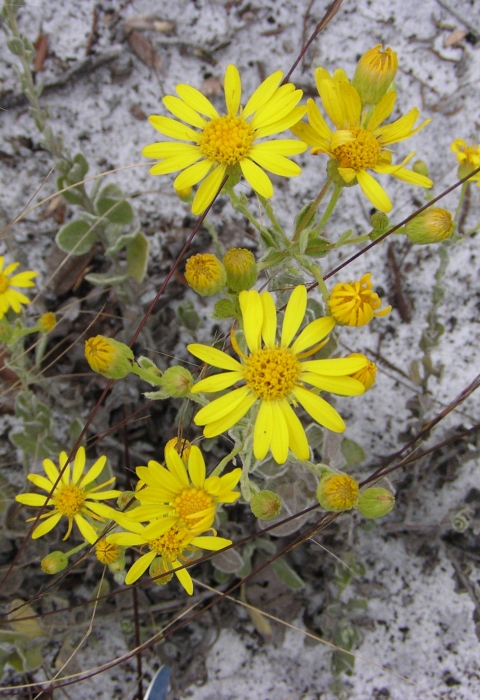The rare, and lovely, Florida golden aster has many friends and, now, some money to help the endangered species on the road to recovery.
Tiffany Lane, worked with land managers from Fort De Soto Park and biologists from the Rare Plant Conservation Program at Bok Tower Gardens to study and preserve the short-lived perennial that’s found in only five counties in the Tampa Bay region. Bok Towers received $22,000 from the Coastal program to go along with $21,500 in matching funds.
The aster lives in open, sandy soils along Florida scrub and sand hill communities. Only nine populations in southeastern Hillsborough County were known to exist in 1986 when it was listed as endangered. Many locations were targeted for reintroduction during initial recovery efforts, though most of the populations did not survive. Yet one group of asters, introduced in 1989 to Fort De Soto, a Pinellas County park, flourished.
Fast forward to today. That 1989 survivor is hanging on, yet in need of some habitat help. Too much pine and saw palmetto, too little prescribed fire. David Harshbarger, the park manager, mowed away vegetation surrounding the asters providing an opportunity for the population to grow.
Additionally, an experimental seed sowing site was selected elsewhere in Fort De Soto where fewer management actions will be needed. Sandy terrain, minimal foot traffic and little chance of salty storm surges were the criteria. Once the site was chosen, the team collected seeds last December from a healthy population at the nearby Alafia River State Park. Seeds were sown in two plots in January to mimic the timing of a natural seed drop. Seeds will also be sown in two other plots in late June or early July to test the impact of the rainy season on germination.
The golden asters, today, are doing much better – so much so that the last two, five-year reviews recommended reclassifying the flower to threatened.
There are now 37 known populations due to additional surveys, habitat restoration and plantings inside the aster’s historic range. Twenty-five of the populations are found on 19 protected conservation lands; there were none on protected lands in 1986. And 20 of the 37 populations were home to more than 500 individual plants.
Hopefully, with continued Coastal program support, Fort De Soto Park will play a key role in the golden aster’s long-term survival.




